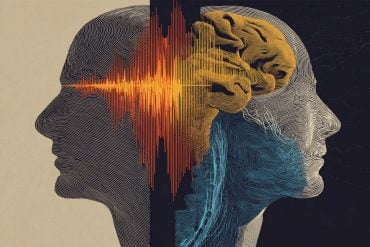Summary: Nearly half of cancer patients suffer circadian rhythm disruptions during chemotherapy, worsening side effects. A new study using mice shows that paclitaxel, a common breast cancer drug, may disturb the brain’s master clock without directly entering it.
Treated mice displayed irregular circadian gene activity and difficulty adapting to light cues, suggesting disrupted daily rhythms. These findings could pave the way for clinical strategies that help patients maintain healthier circadian rhythms during treatment.
Key Facts:
- Drug Effect: Paclitaxel disrupted both molecular and behavioral circadian outputs in mice.
- Clock Disruption: Treated mice failed to adapt properly to light-based circadian cues.
- Clinical Potential: Structured day/night cues may reduce side effects in patients.
Source: SfN
During and after chemotherapy, nearly half of cancer patients endure circadian rhythm disruptions, which worsens treatment side effects.
Because the body’s primary rhythm pacemaker is in the brain, this suggests that perhaps chemotherapeutics target the brain to disrupt circadian rhythms.
However, research shows that cancer treatments do not penetrate the brain well.
To shed light on this discrepancy, researchers led by Leah Pyter at Ohio State University explored whether paclitaxel, a frequently used breast cancer treatment, disrupts the biological clock in the brain to impair circadian rhythms.
In their eNeuro paper, the researchers used a paclitaxel treatment regimen on mice and measured molecular and behavioral changes linked to biological clock functioning.
They examined only female mice because breast cancer primarily affects women.
The expression of circadian rhythm-related genes in the primary biological clock did not fluctuate throughout the day in treated mice, which was irregular.
Because light is the most important cue for the pacemaking function of this brain region, the researchers assessed how different light challenges influenced biological clock-mediated behavioral adaptations.
Mice undergoing chemotherapy did not adapt as well to these challenges.
Thus, paclitaxel may disrupt both molecular and behavioral rhythm outputs of this pacemaker brain region.
Says first author Zoe Tapp, “The idea that the principal part of the circadian clock in the brain isn’t directly targeted by paclitaxel but is still affected by treatment was new and interesting to see.”
Speaking on potential clinical implications of this work, says Pyter, “Linking the circadian rhythm disruption that patients complain about to the side effects of chemotherapy that cause quality-of-life issues more solidly may be an important next step.
“It’s possible that giving cancer patients obvious information about ‘day’ and ‘night’ and proper circadian rhythm maintenance could reduce side effects during treatment. But we would need to show that circadian rhythm brain pathways are affected by chemotherapy for this to happen.”
About this chemotherapy and circadian rhythm research news
Author: SfN Media
Source: SfN
Contact: SfN Media – SfN
Image: The image is credited to Neuroscience News
Original Research: The findings will appear in eNeuro







